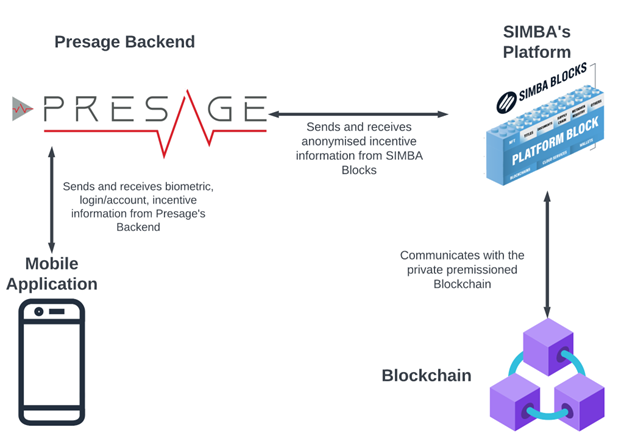November 30, 2023
Local Health Alert System (LHAS)
The LHAS aimed to capture users’ health indicators, translate those indicators to create a risk assessment, and use that risk assessment data to inform the public health supply chain about possible demand surges.
Proposed Solution
Impact
Outcome
Project outcome is the Local Health Alert System (LHAS), which is demonstrated through a proof-of-concept mobile application that transforms a smartphone into a cutting-edge tool for measuring vital health signs through video technology. The LHAS architecture, mobile application, and pilot program case study are available to MxD members.
The system’s main components are described below.
Mobile application. This is the vehicle by which users can capture and securely submit their biometric data to Presage Technologies’ backend system, which is integrated with the blockchain-based incentive rewards system. During the pilot program, users were incentivized to participate using Prysm Group’s specifications for economic incentives best suited to elicit voluntary participation in the LHAS program. Demonstration of the mobile application shown below.
Presage Technologies’ backend infrastructure. The health-related data from the mobile application is sent to Presage’s backend system, where it is stored according to HIPAA compliance requirements. Data is retained for the minimum time required by the organization using the LHAS system or by applicable data retention laws. Account management also occurs in Presage’s backend.
LHAS Administrative Dashboard. The dashboard is a privileged view of the general health readiness of the organization that is inaccessible to the average user. Only authorized users can access this dashboard and its insights and metrics. One such insight is to view all users invited along with the organization, group, or department they fall under. It is important to note that health data is not displayed for an individual user and only the aggregate health score is displayed for groups or for an organization.
Blockchain Smart Contract Application. Blockchains are immutable, meaning that no data written onto the blockchain can be altered, so they provide a source of truth of the transaction history. They provide trust and validation of digital information. Smart Contracts are applications that run on the blockchain in a secure, transparent, and verifiable manner. In LHAS, blockchain is used to track user participation and the rewards due in an irrevocable manner, which provides a trusted backbone for the system.
Demonstration of LHAS Mobile Application